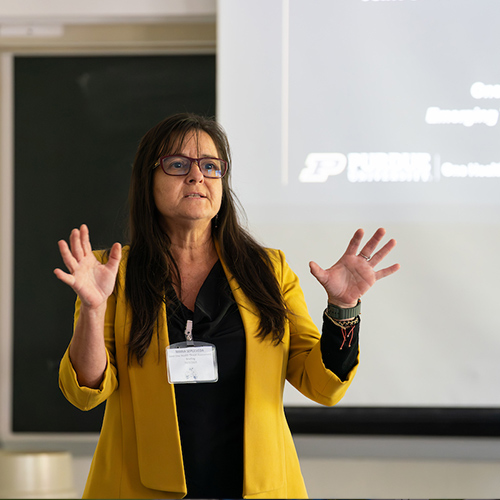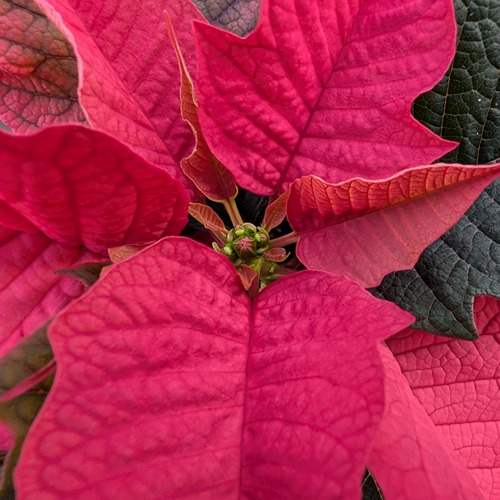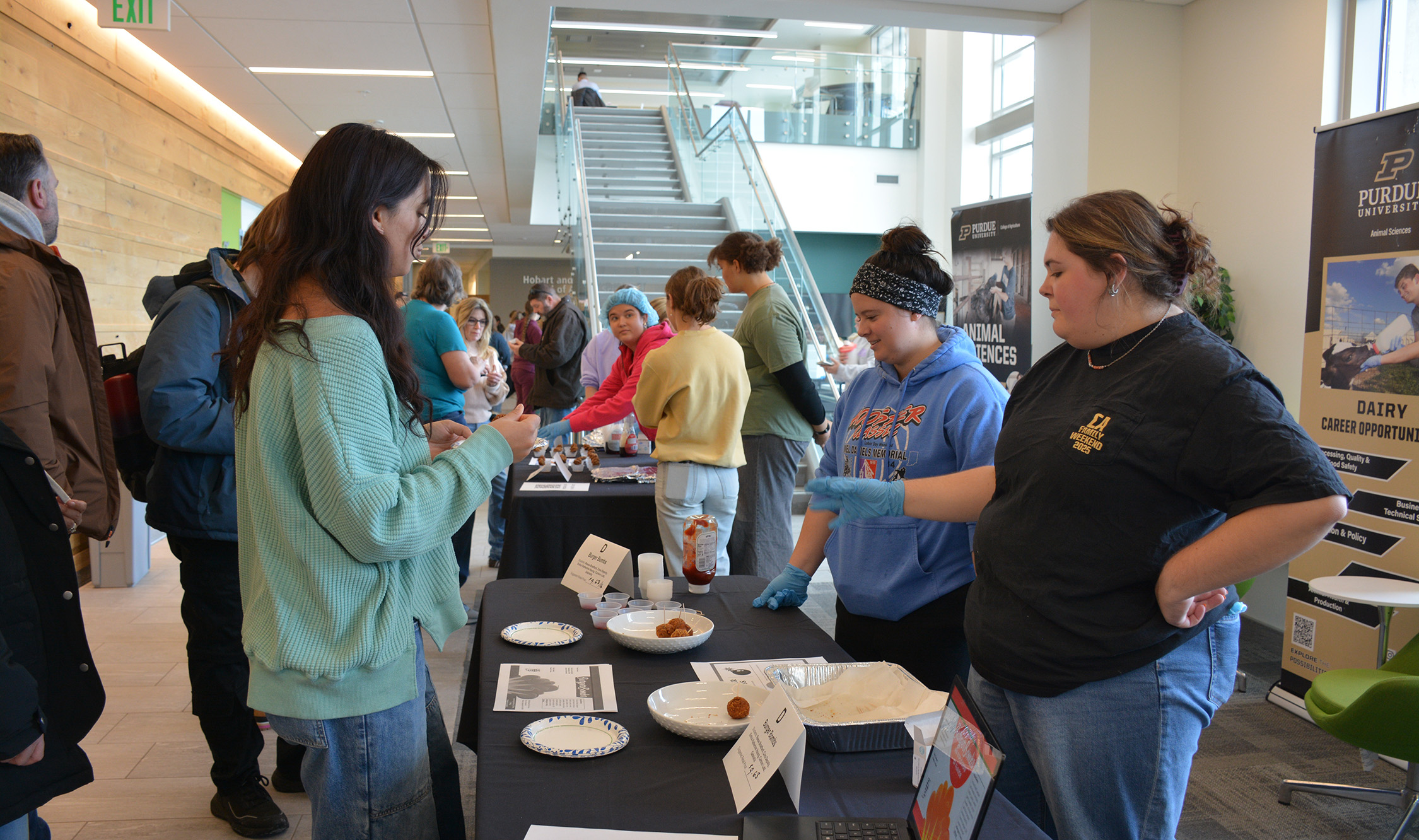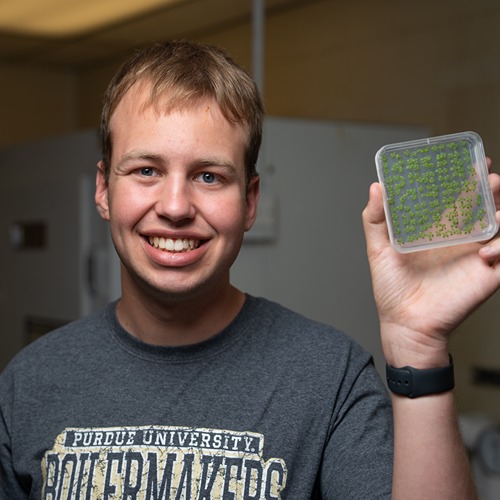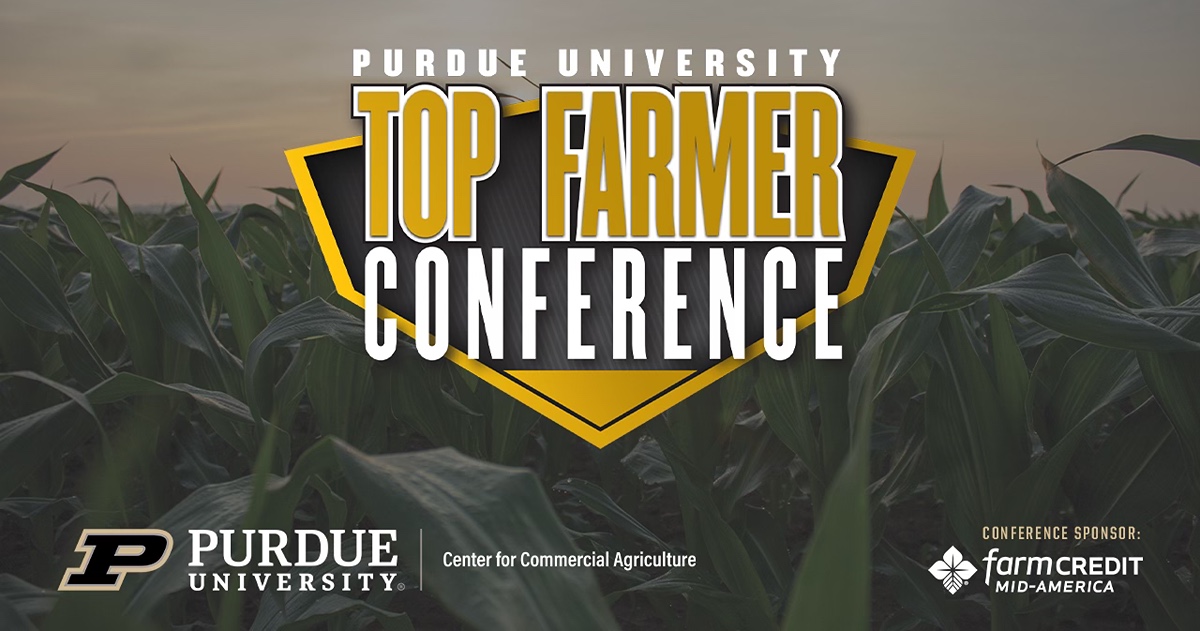Sophia Dasaro - Graduate Ag Research Spotlight
Every time I come into the lab, I know that I’m going to be learning something new, and every day is a step forward towards understanding these novel drug delivery systems.
- Sophia Dasaro, PhD student, agricultural and biological engineering
The student
Sophia Dasaro was 8 when she accompanied her mother, who works in human resources for a pharmaceutical company, on Bring your Child to Work Day. The lab coats that staff wore captured Dasaro’s imagination, and she resolved to have one of her own someday. The New Jersey native was the first in her immediate family to attend a traditional four-year college so relied on advice from a high school guidance counselor who told her, “You have good grades in science and math. Go find an engineering school.” Dasaro found Purdue and selected it for its affordability and reputation. She also joined a group chat of other newly admitted students. “Some of the people I met in those group chats are my friends to this day,” she says. After completing her undergraduate degree in ABE in 2022, Dasaro prepared to enter industry. “But I felt this pull,” she says. “I loved the academic environment and learning, and I wanted to have a deeper understanding of the field I was going into.” Her Purdue professors encouraged her to apply to graduate programs, Purdue among them. “What really solidified the choice was interacting with the different advisor opportunities at Purdue,” she says. She began PhD studies in 2022 with Kurt Ristroph, assistant professor of agricultural and biological engineering. “Beyond work, he cares deeply about his graduate students’ personal well-being and success,” she says.
The research
The Ristroph lab formulates nanocarriers for the controlled delivery of therapeutics. Dasaro’s research focuses on improving the delivery of antibiotics, specifically peptides and proteins. To understand the characteristics of these delivery systems, Dasaro uses a technique called small angle X-ray scattering (SAXS). Over six weeks during her first year of doctoral study, she used the Australian Synchrotron SAXS facility in Melbourne. “When we went to the Synchrotron facility, we had an idea what we were looking for, but we didn’t know how all the parameters we were changing would affect each nanocarrier,” she says. This characterization is key to developing strategies to effectively deliver antibiotics for a given end application that the human body will not reject.
Opportunities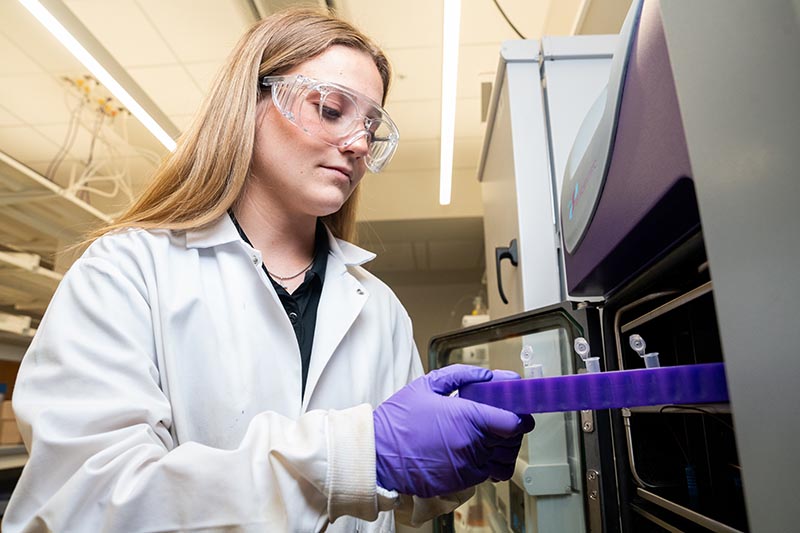
Dasaro enjoys her lab team, which she calls collaborative rather than competitive. Early in her studies, Ristroph entrusted her to stand by a lab overview poster at the William D. Young Facility for Advanced Manufacturing of Pharmaceuticals, where she fielded questions from faculty, staff and industry representatives. “That was an early confidence boost,” she says. She recently presented at the 2024 AIChE Annual Meeting in San Diego, where her essay won first place in the Engineering Insights Challenge sponsored by Dow and the North American Mixing Forum. Dasaro is president of the ABE Graduate Student Association and was awarded the ABE Outstanding Service Award for service to her department. She is first author on a recently published paper, and helps science and engineering students apply for graduate school and fellowships as an IoT4AG PPP Mentor.
Future plans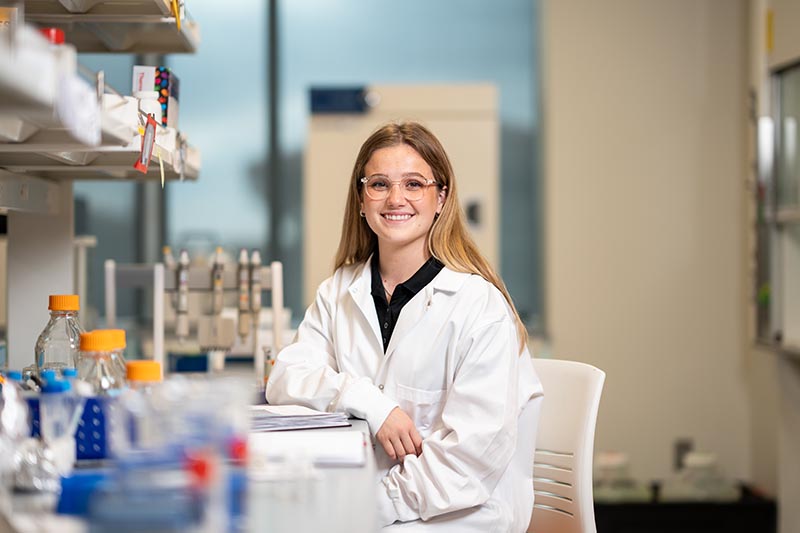
Dasaro is halfway through her PhD program and planning a career in industry. “I’m pulled to being part of teams and able to interface with different projects,” she says. She would like to land somewhere on the East Coast for its closeness to family and abundant opportunities in the pharmaceutical industry. Reading, embroidery and running balance her work in the lab, allowing her to remain excited and eager to learn, she says.
